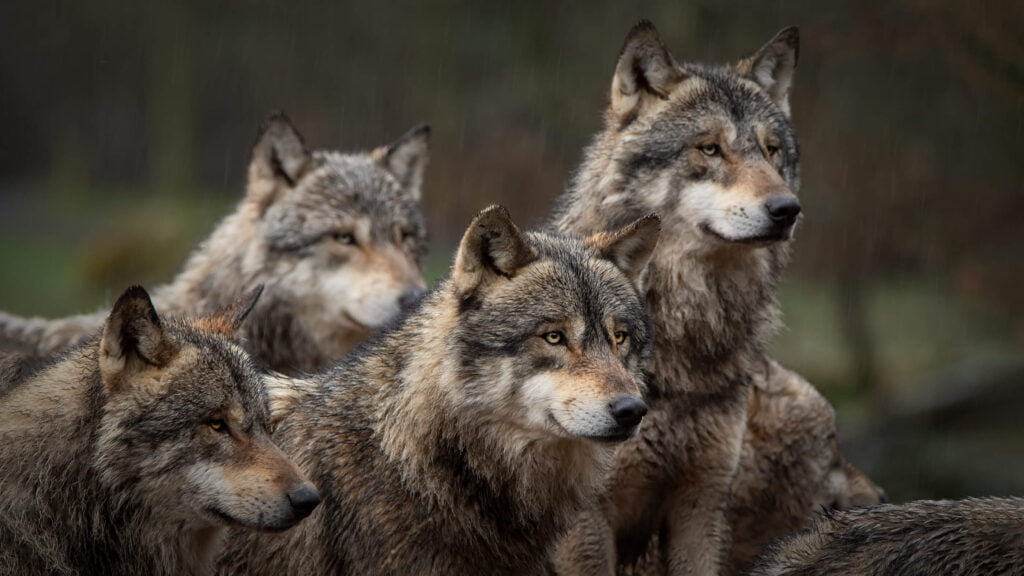Herding training is a specialised form of dog training that channels a dog’s natural instincts to work with livestock, including sheep, cattle, and even ducks. While historically, herding breeds such as Border Collies, Australian Shepherds, and German Shepherds were bred specifically for this task, many other breeds with strong work drives can benefit from herding training, which enhances not only their physical activity but also their mental stimulation.
In this article, we will explore the key elements of herding training, the benefits for both dogs and handlers and the steps to introduce your dog to this rewarding practice.

The instinctual element
Herding dogs possess an innate ability to gather, control, and move livestock. This behaviour comes from centuries of selective breeding aimed at creating dogs that are not only intelligent but also capable of managing animals that are larger and sometimes unpredictable. However, without proper guidance and training, even the most instinctual dog may struggle to control livestock in a safe and effective way.
Why herding?
Even if you don’t have livestock, herding training offers numerous benefits:
- Mental and physical stimulation: Herding taps into a dog’s mental agility and problem-solving skills, providing a full-body workout.
- Instinct fulfilment: For herding breeds, training satisfies their natural drive, reducing boredom and behavioural issues.
- Teamwork and bonding: Training fosters a deep connection between handler and dog as they learn to communicate and work together toward a common goal.
- Competitive opportunities: Many handlers and dogs participate in herding trials and competitions, showcasing their skills in organised settings.

Steps to beginning herding training
- Assess the instinct
Not every dog will take to herding immediately, so it’s important to assess your dog’s instincts before diving into training. Many herding dogs show interest in controlling the movement of other animals or even objects like toys or people. Watch how your dog reacts around livestock, or take them to a professional trainer who specialises in herding instinct tests to see how they respond.
- Basic obedience
Before introducing your dog to livestock, ensure they have a solid foundation of obedience training. Commands such as ‘sit,’ ‘stay,’ ‘come,’ and ‘heel’ are critical to maintaining control in a herding situation. Without these, your dog may become overstimulated or even attempt to chase livestock inappropriately, which could be dangerous.
- Introducing livestock
Once your dog has a strong obedience foundation, it’s time to introduce them to livestock. Begin in a controlled, enclosed area with small, calm animals, such as sheep or ducks. Use a long line or lead to ensure you can guide your dog and redirect them if needed.
Allow your dog to observe the animals from a distance, and watch for signs of interest or instinctual behaviour such as eye-stalking, circling, or crouching. A professional herding instructor can guide this first interaction to prevent any over-excitement or confusion.
- Training commands
Once your dog shows interest and appropriate behaviour around livestock, you can start working on basic herding commands. Some common herding commands include:
- ‘Come-bye’ – Move clockwise around the livestock.
- ‘Away to me’: Move counter-clockwise around the livestock.
- ‘Walk up’: Approach the livestock.
- ‘Lie down’ or ‘Stand’: Stop and hold the position.
These commands are essential for directing your dog and controlling the movement of the livestock. Patience is key when teaching these commands, as it may take time for your dog to fully understand their role in the process.
- Improving focus and precision
As your dog becomes more comfortable with livestock and herding commands, focus on improving their control, focus, and precision. Teach them to respond to commands from a distance and to maintain control even in more dynamic or stressful situations. This might include working with different types of livestock or in new environments.
Herding dogs must learn to move animals calmly and efficiently without causing stress or chaos, which is why building up to more advanced tasks gradually is essential.
- Consistency
Herding training requires consistent practice and a calm, positive approach. Your dog will need regular exposure to livestock and practice following commands. Keep sessions short and engaging to maintain your dog’s enthusiasm, and always end on a positive note to encourage their progress.

Competitive herding
For those interested in competitive herding, herding trials are organised events that test a dog’s ability to manage livestock in a variety of tasks. Dogs are judged on their ability to control the herd, follow commands, and maintain the safety and well-being of the animals. Competing in herding trials can be a rewarding experience for both dogs and handlers, showcasing the skills and teamwork they’ve developed.
Professional trainers
While some dog owners are able to teach basic herding commands, working with a professional herding trainer is highly recommended, especially for beginners. A trainer can ensure the safety of both the dog and livestock and offer expert guidance to help your dog unlock its full herding potential.
Final thoughts
Herding training is an immensely fulfilling way for dogs to engage their natural instincts and develop mental sharpness, physical prowess, and teamwork skills. Whether you’re working on a farm, competing in herding trials, or simply offering your dog a fun new challenge, herding training is a valuable way to deepen the bond between you and your canine partner!



